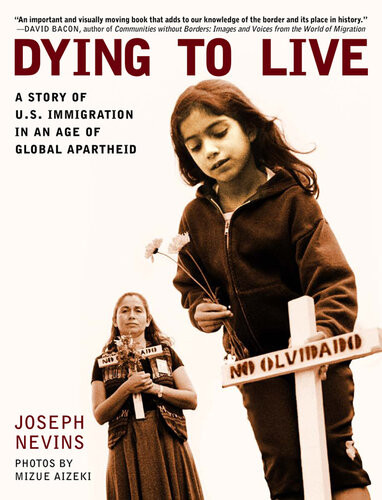

Most ebook files are in PDF format, so you can easily read them using various software such as Foxit Reader or directly on the Google Chrome browser.
Some ebook files are released by publishers in other formats such as .awz, .mobi, .epub, .fb2, etc. You may need to install specific software to read these formats on mobile/PC, such as Calibre.
Please read the tutorial at this link: https://ebookbell.com/faq
We offer FREE conversion to the popular formats you request; however, this may take some time. Therefore, right after payment, please email us, and we will try to provide the service as quickly as possible.
For some exceptional file formats or broken links (if any), please refrain from opening any disputes. Instead, email us first, and we will try to assist within a maximum of 6 hours.
EbookBell Team

5.0
100 reviewsA compelling account of U.S. immigration and border enforcement told through the journey of one man who perished in California's Imperial Valley while trying to reunite with his wife and child in Los Angeles. At a time when Republicans and Democrats alike embrace increasingly militaristic border enforcement policies under the guise of security, and local governments around the country are taking matters into their own hands, Dying to Live offers a timely confrontation to such prescriptions and puts a human face on the rapidly growing crisis. Moreover, it provides a valuable perspective on the historical geography of U.S./Mexico relations, and immigration and boundary enforcement, illustrating its profound impact on people's lives and deaths. In the end, the author offers a provocative, human-rights-based vision of what must be done to stop the fatalities and injustices endured by migrants and their loved ones.
Praise for Dying To Live:
"In Dying to Live, Joseph Nevins and Mizue Aizeki have produced an important and visually moving book that adds to our knowledge of the border and its place in history. Nevins' painstaking research documents the development of the Imperial Valley—its industrial agriculture, its divided cities, and the chasms between rich and poor, Mexican and anglo, that have marred its growth. Through the valley runs the border, and Nevins' accounts of the growth of border enforcement on the U.S. side, and the racism of its legal justifications, will be a strong weapon for human rights activists. Mizue Aizeki takes her camera and tells the story of Julio Cesar Gallegos, who died in the desert trying to make it across. Her images of the stacked bodies of border crossers held in refrigerator trucks, and the barrenness of the ocotillo cactus on the flat hardpan are eloquent testimony to the terrible risks and human costs imposed on migrants. Her beautifully composed portraits of Gallegos' family make a direct appeal to the heart in a way that words cannot